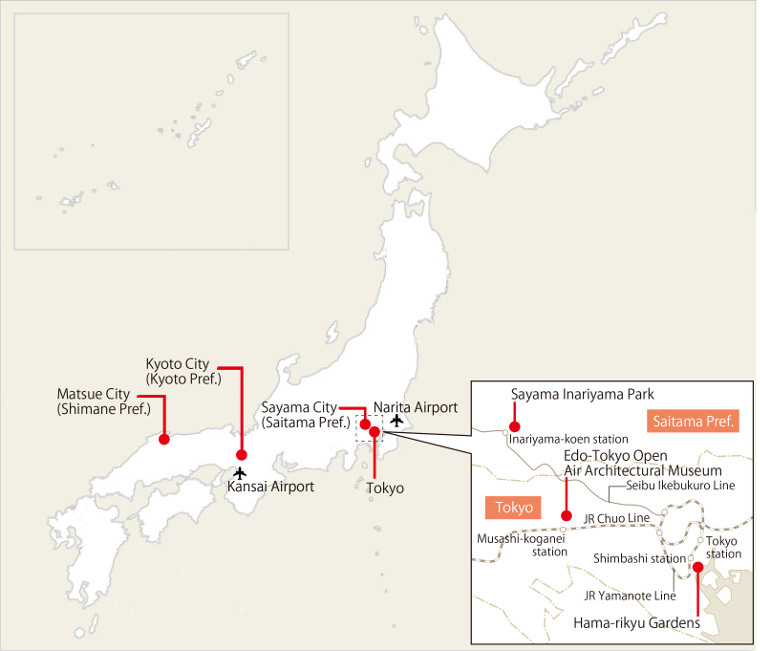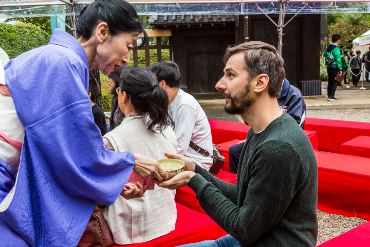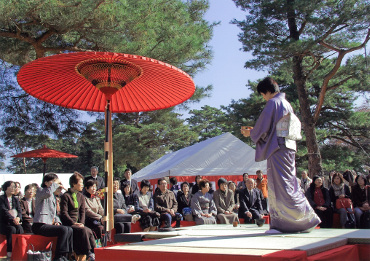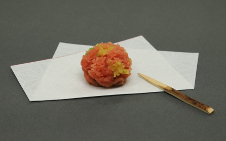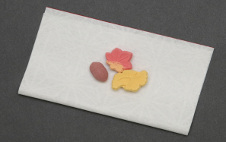Web Japan > Trends in Japan > Food & Travel > Feel Free to Join In a Grand Tea Ceremony
Feel Free to Join In a Grand Tea Ceremony
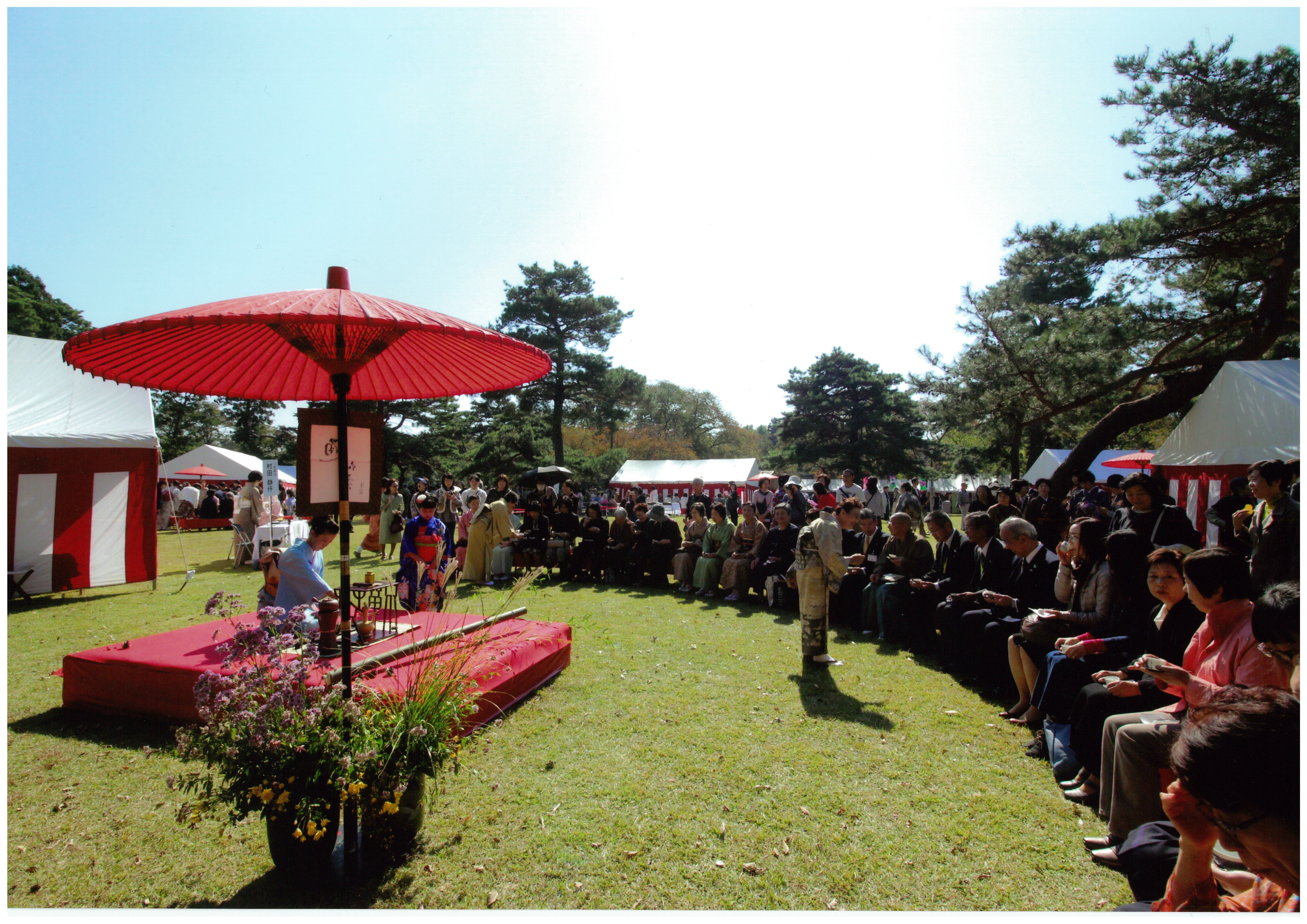
The "Sayama Grand Tea Ceremony" held at Sayama Inariyama Park in Saitama Prefecture (courtesy of Sayama City)
"Sado" is a tea-drinking ceremony, well-known as one of Japan's traditional cultural events. You pour the tea and drink it. The series of moves involved are both formal and mysterious. So what should you do if you are interested and would like to try it but don't know what to do? Even as a novice or a non-Japanese person with no prior knowledge, there are events that you can have fun taking part in while learning about the tea ceremony.
Was it Toyotomi Hideyoshi who started the "Grand Tea Ceremony"!?
In the fall, tea parties known as "Grand Tea Ceremonies" or "Citizens' Tea Ceremonies" are held throughout Japan. Anyone can join in, even if they know nothing about the tea ceremony, have no special implements, and are wearing ordinary clothes. So why have these tea parties become so popular? Let's start with a look at their history.
In October 1587 Toyotomi Hideyoshi, who was not only a person of influence at the time but also a Tea Master (a person known to be well-versed in the tea ceremony), held a large-scale tea ceremony known as the "Kitano Ocha-no-Yu" in the precincts of the Kitano Tenmangu Shrine in Kyoto. Hideyoshi himself hosted this tea ceremony in collaboration with famous tea masters such as Sen no Rikyu, who is regarded as the father of Sado. Everyone was allowed to take part regardless of their social status, from the lords known as "Daimyo" and samurai to the farmers. At the tea ceremony, not only was there a golden tea room, but the tea ceremony equipment that was Hideyoshi's pride and joy was also on display; and it said that more than 1,000 people participated in just one day.
Grand Tea Ceremonies and Citizens' Tea Ceremonies for anyone to feel free to join in started to be held every year in the fall, following this grand tea ceremony at Kitano.
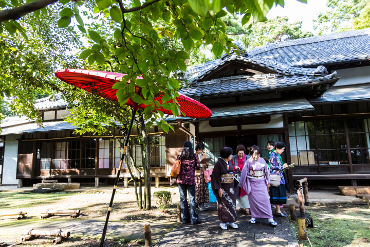
The Tokyo Grand Tea ceremony held at the Edo-Tokyo Open Air Architectural Museum. Various tea ceremonies are held in the historical buildings
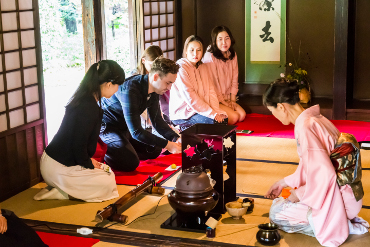
A view of a tea ceremony taking place inside a building Sponsored by the Tokyo Metropolitan Government and the Arts Council Tokyo (Tokyo Metropolitan Foundation for History and Culture)
The "Tokyo Grand Tea Ceremony" - set in a charming venue
Today even bigger tea ceremonies are held. Among these, the large "Tokyo Grand Tea Ceremony" celebrated its tenth anniversary in 2017. Among these, the large "Tokyo Grand Tea Ceremony" celebrated its tenth anniversary in 2017. To date more than 190,000 people have taken part in the ceremony, which is held for a total of four days in two locations - the Edo-Tokyo Open Air Architectural Museum and the Hama-rikyu Gardens. There are a lot of programs planned to allow many people, such as the younger generation and non-Japanese people, to have fun familiarizing themselves with the "Culture of Japan" through Sado.
The splendor of the venues is also one of the attractions. Edo-Tokyo Open Air Architectural Museum is an open air museum where buildings of significant cultural value have been relocated for display; from buildings that were made hundreds of years ago to those made in recent years. It is extra special to have your tea served in a charming historic building such as a farm house with a thatched roof, or a noble family's mansion.
Meanwhile the Hama-rikyu Gardens are a vast Japanese Garden with the remains of feudal lord's mansion from over 300 years ago that had two grounds for duck hunting, with salt water lakes that change atmosphere with the rise and ebb of the tides. And it is within walking distance of Ginza, a famous shopping district, representative of Japan. What a unique experience - a tea ceremony held in a luscious green park with a view of the sea and the buildings.

Hama-rikyu Gardens where you can enjoy an open-air tea ceremony with a feeling of space, even though you are surrounded by Tokyo's buildings (Tokyo Grand Tea Ceremony)
A wide variety of programs
There are various programs available at the Tokyo Grand Tea Ceremony. Learn the basics of Sado in the "Tea Ceremony Experience for Beginners" where groups of two people make the tea. You are taught politely from the first greeting, including how to hold the tea cup and how to eat the sweet delicacies that are served with the tea. It is not just the etiquette that is taught but also an explanation of the gestures, so that you can enjoy a hands-on experience of Sado while also understanding the details. "WELCOME! Enjoy the Tea Ceremony in English" sessions allow you to enjoy a proper tea ceremony while listening to a simultaneous interpretation of the commentary through earphones. There are also "Tea Ceremony Classes for Children" for those of primary school age and under, where the teacher gives instructions that are easy to understand and the children are also in charge of the hospitality side.
"Nodate" is an outdoor tea ceremony where you sit and drink tea on a "Mousen" (a red cloth) spread on the ground or on a seat. Nodate is said to come from the historical practice in the Sengoku era where warriors and feudal lords would take a break for tea while on an expedition or hunting trip. Outdoor ceremonies were also held at Toyotomi Hideyoshi's Kitano Ocha-no-Yu. Later they become popular as part of excursions to view the cherry blossom, etc.; in other words, a Japanese version of a picnic.
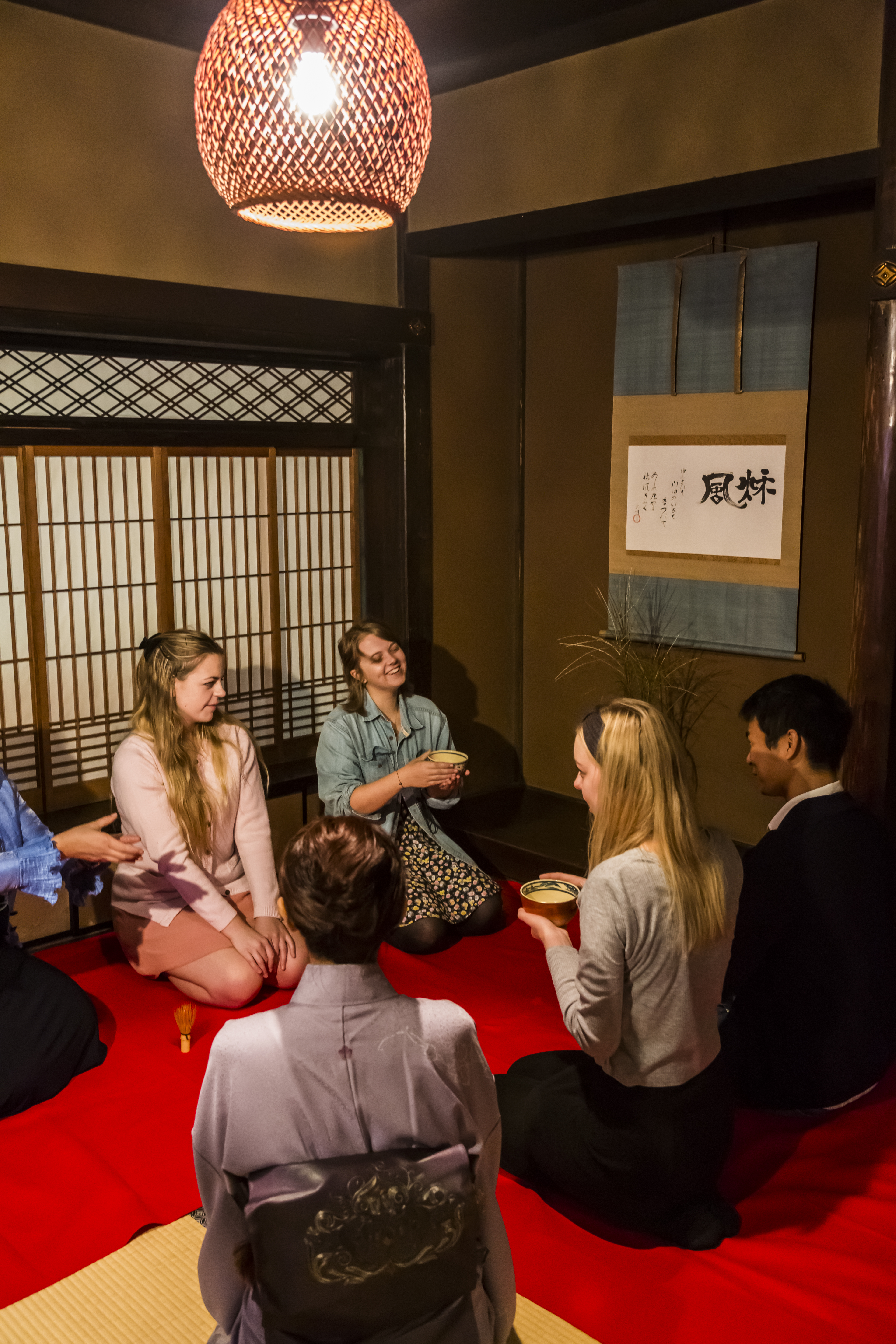
A "Tea Ceremony Experience for Beginners" session (at the Edo-Tokyo Open Air Architectural Museum)
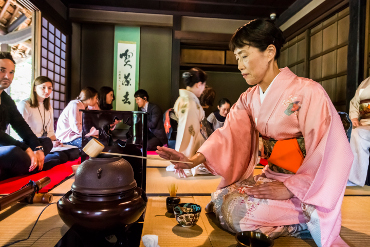
A "WELCOME! Enjoy the Tea Ceremony in English" session (at the Edo-Tokyo Open Air Architectural Museum)
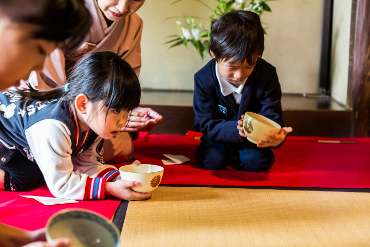
Children listening to the explanations with serious expressions at a "Tea Ceremony Class for Children" session (at the Edo-Tokyo Open Air Architectural Museum)
Try Taking Part in a Tea Ceremony
Apart from the Tokyo Grand Tea Ceremony, there are many others including the Sayama Grand Tea Ceremony - an outdoor ceremony held in Sayama Inariyama Park in Saitama Prefecture; the Citizens' Grand Tea Ceremony held at Nijo Castle in Kyoto; and the Matsue Grand Tea Ceremony held in Matsue, a castle town in Shimane Prefecture. Many are headed by local government bodies (such as the City Hall etc.) and most take place in castles, gardens or historical sites where you can enjoy the unique atmosphere and charm of the location.
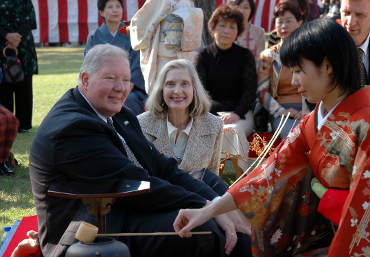
The Sayama Grand Tea Ceremony where you can feel free to join in even if you are not Japanese (courtesy of Sayama City)
If you want to take part in a grand tea ceremony, then check the event calendars etc. on the local government websites of the places you plan to visit. Many places release information around summer time on tea ceremonies due to held in the fall. The information is also listed in informational magazines and websites for tourists. For many tea ceremonies you can take part with tickets bought on the day, but in some cases you will not be able to participate unless you purchase a ticket in advance.
Basically you can attend a grand tea ceremony or a citizens' tea ceremony with no preparation at all, but if you can obtain them beforehand, it is considered "chic" to bring a Kaishi (folded napkin), a Yoji(toothpick/skewer) and a Sensu(fan). Women may want to wear white socks. Kaishi is a paper napkin that sweet Japanese delicacies are placed upon; and the Yoji is for cutting up the sweet delicacies and conveying them to your mouth. And the Sensu is a prop that is used for greetings. In terms of clothing, if you really want to do it properly you should wear a Kimono (Japanese clothing) with white Tabi (a type of sock worn with kimono) on your feet. If you are wearing western-style clothing, then white socks should be substituted for the white Tabi.
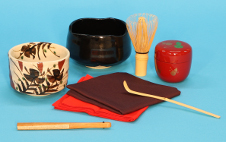
Various implements used in Sado. To the front-left is the fan. A fan is usually used in the hot season when you open it up to fan yourself; however in Sado it is kept shut and used as a prop
A grand tea ceremony is perfect for novices with an interest in Sado. The taste of the tea and the sweet delicacies as you sit at a tea ceremony on a fine day is a wonderful feeling. Why not first start by trying it out with an easy-going hands-on session?
